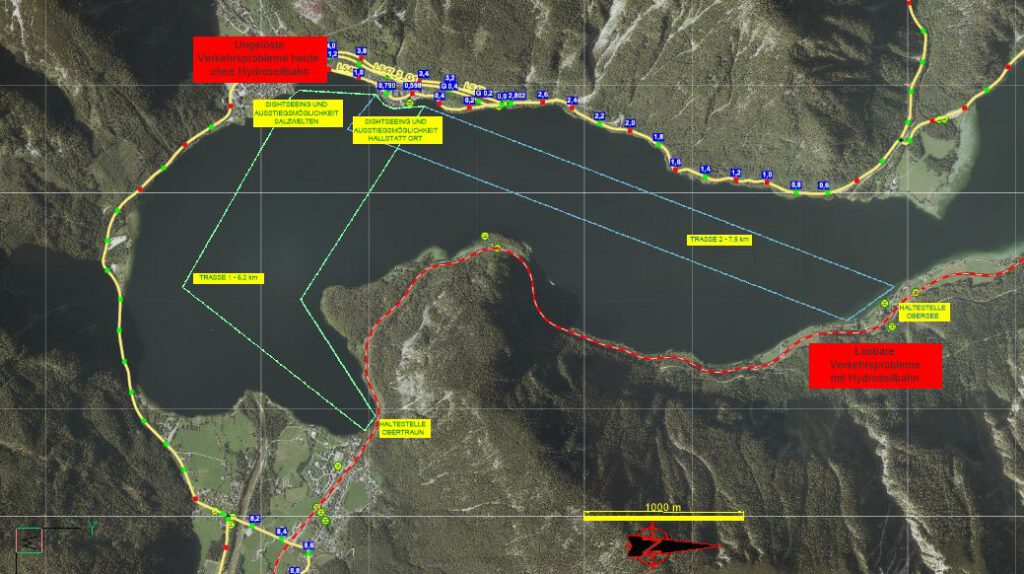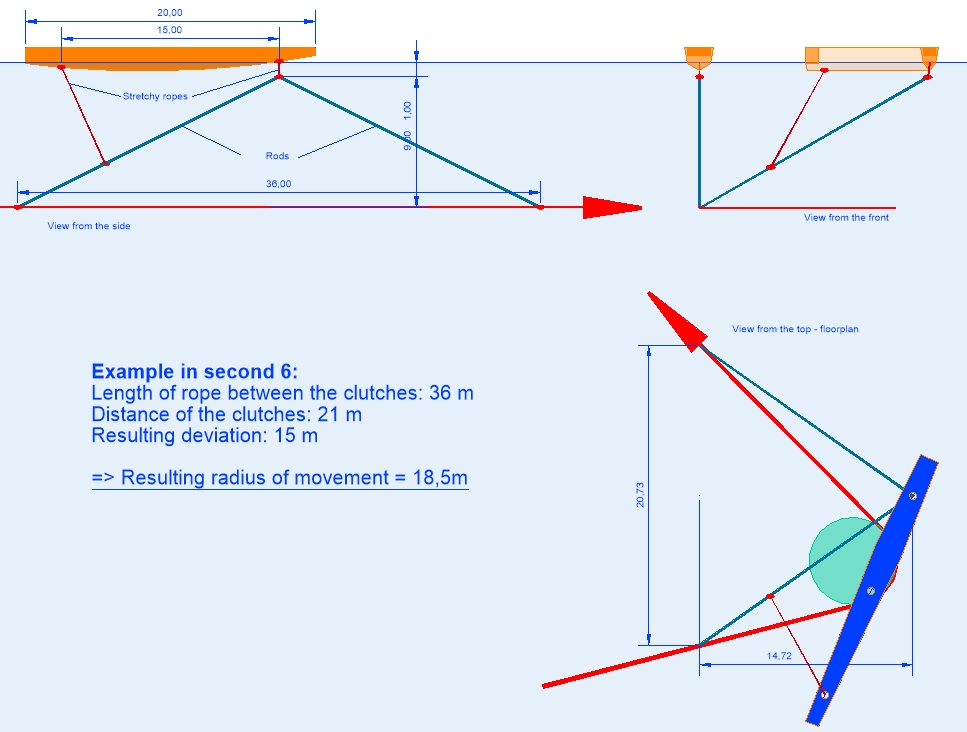HYDRO-CABLECAR
WHY?
Tourism: Hotspots situated by the water and crowded with visitors need solutions to solve their traffic problems on the other coast on cheaper grounds.
Mobility Needs: Many bodies of water need possibilities for crossing and construction of an elaborate bridge is too expensive.
Military: Non visible crossing possibility, prepared for the loss of bridges.
HYDROCABLECAR solves those problems.
HOW?
A proposed solution is a hydroropeway with open, detachable boats that are pulled through the water by cable, bringing passengers and goods to their destination. Individual cabins operating alternately also are possible. The transport cable lies significantly below the water surface, depending on necessity and particularly due to other ship traffic, in the example here approximately 10 meters.

The boats are coupled and decoupled from the circulating transport cable as needed and are slowed down at the boarding and disembarking points. The may be designed like locally usual, as Zille, Vaporetto, Gondola a.s.o.
When not in use, the boats and inlays are stored in a boat and inlay storage similar to a monocable gondola lift. The boats and inlays are stackable.
EXAMPLE
The adjacent figure 1 illustrates the principle of the invention using Lake Hallstatt as an example: At the eastern (bottom) shore, there are the base station, boat depot, drive system, and a rope tensioning device. Two variants of the ropeway are shown in color (green 6.2 km, blue 7.5 km) , with a capacity of 1.500 persons per hour. Boats are attached to the rope according to the required capacity and are stored in the boat garage when not in demand, leaving the lake clear.
A cheaper variant with one or more permanently attached vessels to the rope is also possible, although it would have a constant energy consumption regardless of usage.
The rope is redirected by pulleys mounted on a floating structure, which is statically connected to the mainland. The connection can be limited to bearing tensile/compressive forces without bending moments. The floating structure is held down by a heavy counterweight on the lakebed or by tensile anchors.


DETAILS
TENSIONROPES: Synthetic and / or carbon materials or new liftropes are suitable for tow ropes due to their lightness, higher tensile strength than steel and lower torsional rigidity.
ROPE GUIDANCE: Pulleys (in clusters or as single wheels) are mounted on horizontal floating structures and can vary in diameter. These floating structures are anchored by counterweights on the lakebed. The horizontal system tension in the rope is transferred to the ground through the floating structure’s connection to the mainland.
DRIVE SYSTEM: Electric motors can be located at the redirection points or outside the water, where the rope is cleaned and redirected back into the system plane.
CONNECTION BETWEEN BOAT AND TOWING CABLE is possible by ropes and / or rods, in the picture nearby there are like a triangel hinged rods (green), which force the boat by shortening one of the trianglesides onto a bigger radius of movement. The connection between rod and boat consists of two single ropes.
The frontrope moves the boat forward, it’s a bit longer than the distance between boat and rod and allows the boats free up- and down-movement. When the resistance of the boat exceeds a certain limit, the rope will be rolled out to bigger length in order to a respond collision. The backrope is always under tension a little bit in order to keep the boats tail in the right direction.
The example nearby assumes the following details:
Rope between couplings: 36 m
radius of pulley: 3 m
Rope 10 m below water
RESULT:
Maximum deviation 15 m
=> Radius of movement: 18,5 m




The INLAY of the boats is designed as a complete, stackable prefabricated part: it is lifted out of the boat using a bracket mounted above the seating area, which can also be unfolded for rain/sun protection, and then stacked while hanging on rails. The boat bodies, now empty, are also lifted out of the water, turned keel up, cleaned in a washing system, and then stacked into each other and stored dry in the depot.
The CLEANING of the transport cable is done at the drive mechanism, and the buoyancy bodies are cleaned as needed by surfacing and submerging again.
I HOPE TO FIND PARTNERS
ON THE WAY TO MAKING
HYDROCABLECAR CONSTRUCTION-READY:
Innovative planners – architects, structural engineers
Specialized foundation engineering firms for the foundation works
Construction companies for building the stations
Rope manufacturers for the production of the towing ropes
Equipment manufacturers for the production of electric motors
Innovative cableway builders for the coupling technology
Boat builders, preferably inflatable boat manufacturers
Experienced cableway operators
Industrial divers for underwater work
Project financiers – crowdfunding companies
The plan is to assemble a consortium with the partners found, which will then construct and operate patented hydro cableway projects throughout Europe. A certain courage to take risks is part of it. But as an inventor, I have had that so far as well.
I look forward to like-minded individuals! Please find my adress in KONTAKT.
